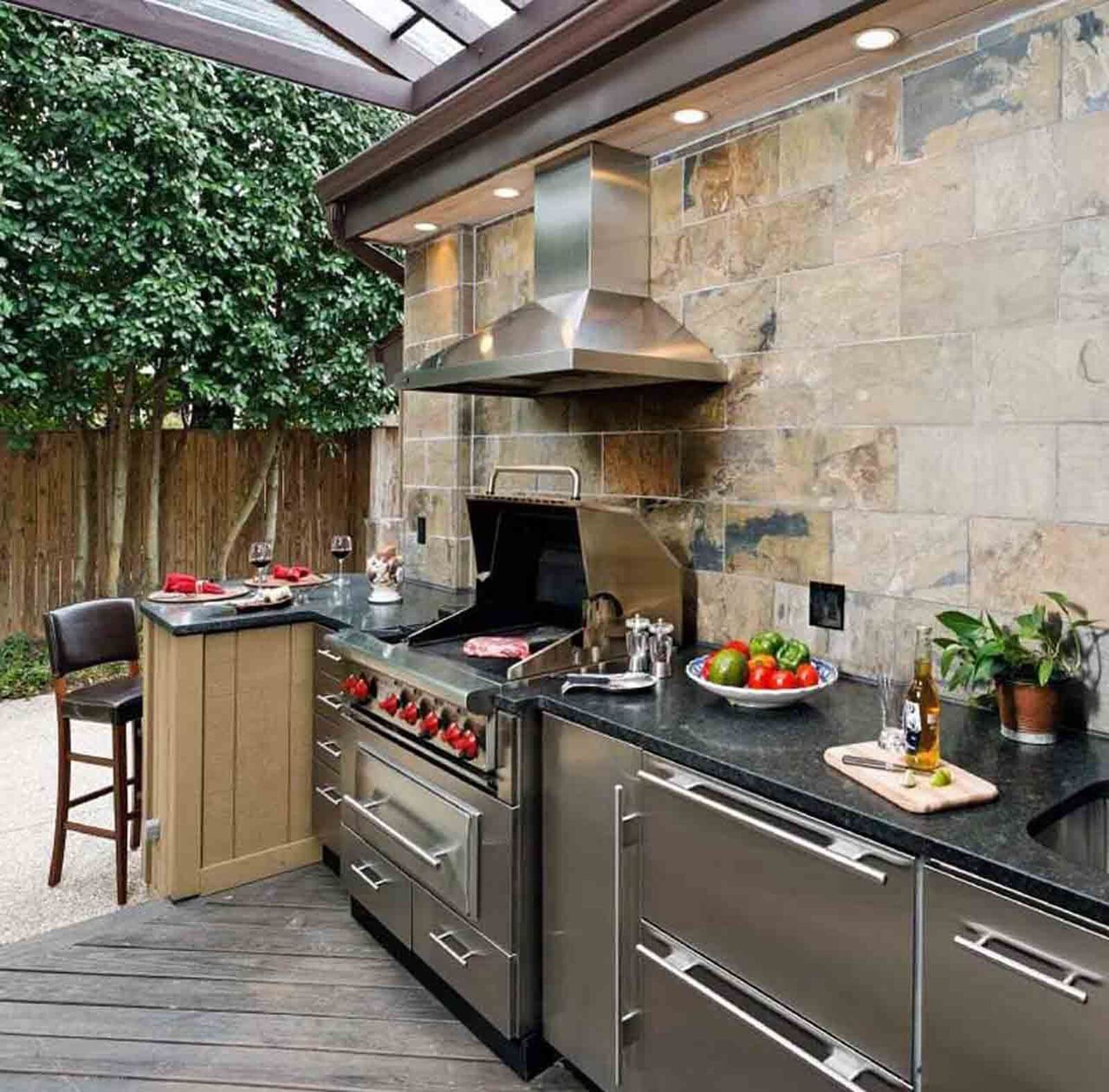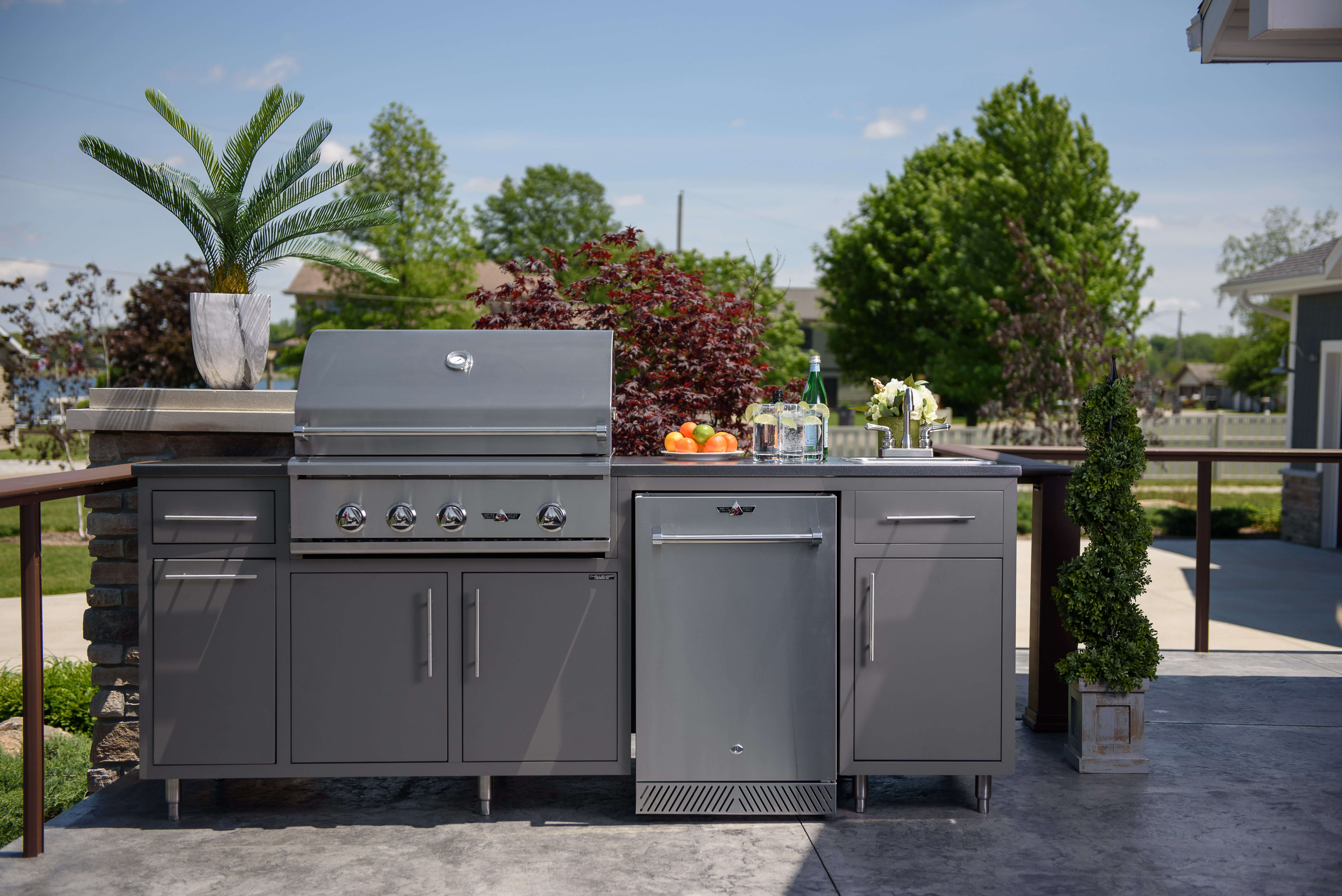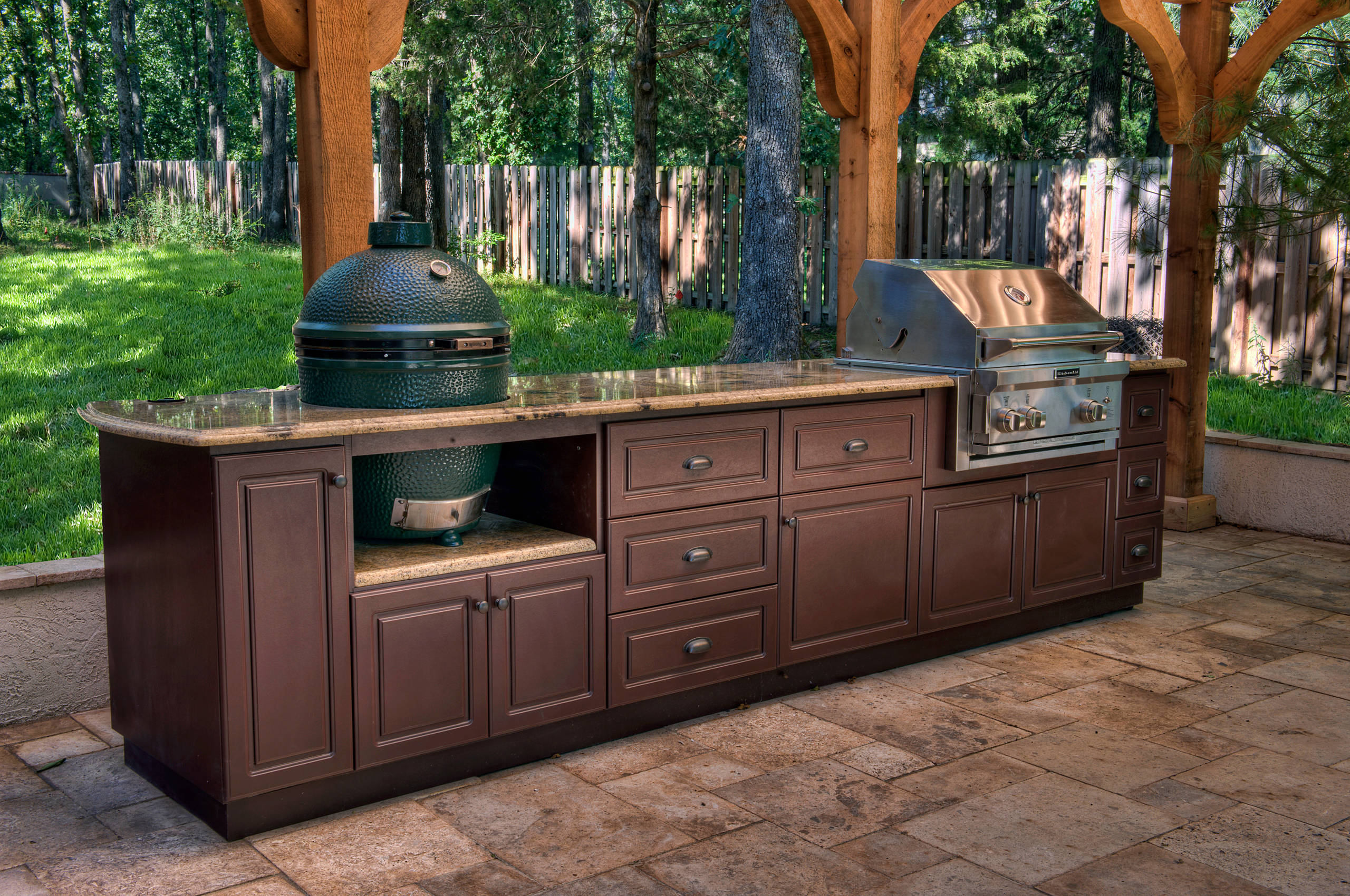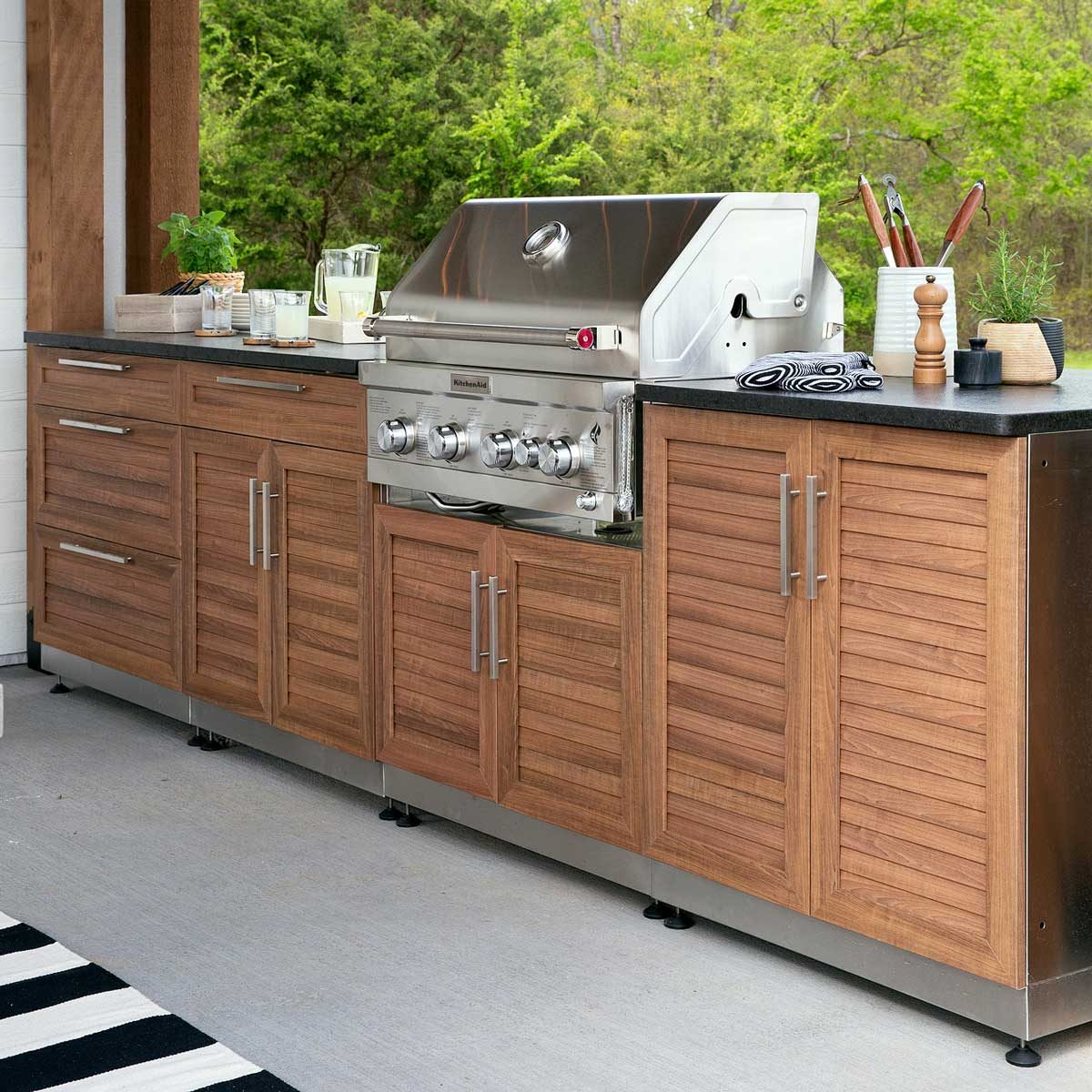
Introduction
An outdoor kitchen is a fantastic addition to any backyard or patio, allowing you to entertain guests and enjoy cooking in the fresh air. When designing an outdoor kitchen, one of the most important considerations is the choice of materials for the cabinets. Outdoor kitchen cabinets need to be durable, weather-resistant, and able to withstand the elements. In this article, we will explore the best materials to use for outdoor kitchen cabinets, discussing their pros and cons to help you make an informed decision for your outdoor cooking space.
1. Stainless Steel

Stainless steel is a popular choice for outdoor kitchen cabinets due to its excellent durability and resistance to corrosion. It is a low-maintenance material that can withstand exposure to rain, sun, and other harsh weather conditions. Stainless steel cabinets are also easy to clean and can be wiped down with a damp cloth to maintain their sleek appearance.
Pros of stainless steel cabinets:
- Highly durable and long-lasting
- Resistant to rust and corrosion
- Easy to clean and maintain
- Sleek and modern appearance
Cons of stainless steel cabinets:
- Can be more expensive than other materials
- May show fingerprints and smudges
- Can get hot when exposed to direct sunlight
2. Marine-Grade Polymer

Marine-grade polymer is another excellent material for outdoor kitchen cabinets, particularly in coastal areas or environments with high humidity. This material is made from a high-density polyethylene that is resistant to moisture, UV rays, and saltwater. Marine-grade polymer cabinets are lightweight, durable, and do not require painting or sealing.
Pros of marine-grade polymer cabinets:
- Highly resistant to moisture, UV rays, and saltwater
- Durable and long-lasting
- Lightweight and easy to install
- Low maintenance and does not require painting or sealing
Cons of marine-grade polymer cabinets:
- May fade or discolor over time
- Not as aesthetically appealing as other materials
- Can be more expensive than other options
3. Teak

Teak is a popular choice for outdoor furniture and cabinets due to its natural beauty and exceptional durability. It is a dense hardwood that is resistant to rot, insects, and warping, making it an ideal material for outdoor use. Teak cabinets can withstand extreme weather conditions and require minimal maintenance.
Pros of teak cabinets:
- Natural beauty and elegance
- Highly resistant to rot, insects, and warping
- Durable and long-lasting
- Low maintenance
Cons of teak cabinets:
- Can be expensive
- Requires periodic oiling or sealing to maintain its color
- May develop a weathered gray patina over time
4. Fiber Cement

Fiber cement is a composite material made from a combination of cement, wood fibers, and other additives. It is a versatile material that can mimic the appearance of wood, stone, or stucco while providing excellent durability and weather resistance. Fiber cement cabinets are resistant to rot, pests, and fire, making them a popular choice for outdoor kitchens.
Pros of fiber cement cabinets:
- Durable and weather-resistant
- Resistant to rot, pests, and fire
- Can be painted or stained in various colors
- Low maintenance
Cons of fiber cement cabinets:
- Heavy and may require additional support
- Can be more expensive than other options
- May require professional installation
5. Powder-Coated Aluminum

Powder-coated aluminum is a lightweight and durable material that is resistant to rust and corrosion. It is often used in outdoor furniture and cabinets due to its ability to withstand harsh weather conditions. Powder-coated aluminum cabinets are available in a wide range of colors and finishes, allowing you to customize the look of your outdoor kitchen.
Pros of powder-coated aluminum cabinets:
- Lightweight and easy to install
- Resistant to rust and corrosion
- Durable and long-lasting
- Available in various colors and finishes
Cons of powder-coated aluminum cabinets:
- May scratch or chip over time
- Can be more expensive than other materials
- May require occasional touch-ups to maintain appearance
Conclusion
Choosing the right materials for your outdoor kitchen cabinets is crucial for creating a functional and long-lasting cooking space. Stainless steel, marine-grade polymer, teak, fiber cement, and powder-coated aluminum are all excellent options to consider, each with their own unique advantages and disadvantages. Consider factors such as durability, maintenance requirements, aesthetic appeal, and budget when making your decision. By selecting the best materials for your outdoor kitchen cabinets, you can create a beautiful and functional space that will withstand the test of time and enhance your outdoor cooking experience.